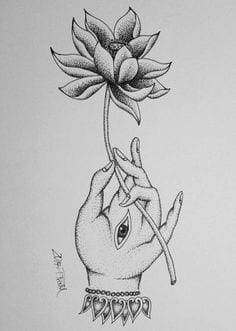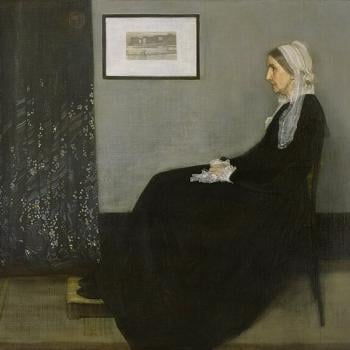In Quest of an American Zen
Reflections as the Empty Moon Zen Network
creates a sangha in Anaheim, California
James Myoun Ford
At the beginning of April, our Empty Moon sanghas currently meeting at the Unitarian Universalist Church of Long Beach and the Orange Coast Unitarian Universalist Church in Costa Mesa will consolidate as a single group, meeting at the Unitarian Universalist Church in Anaheim, California. As part of this consolidation and move, I will be assuming responsibility as part-time minister of the church. And the leadership of the church sees fostering the Zen mission as part of their mission, as well. A lovely, complicated, and no doubt it will be a messy collaboration.
This shift calls me to pause and to consider what we, and I are doing. For both aspects the UU church calling into ministerial leadership a Zen priest, and for the Zen group given more time and space than it has had. The Zen group will be meeting on Saturday mornings, with a day long once a month also scheduled, in addition to every Tuesday evening.
I’m taking this as a moment to reflect on this work in progress.
We started Empty Moon three years ago. We consist of two sanghas in Washington State led by Senior Dharma Teacher Janine Larsen, a sangha in Pennsylvannia led by the Reverend Edward Oberholzer, and what were two groups and now that single consolidated group in Anaheim.
Our mission is to support those who wish to practice in an authentic branch of the great stream of Zen Buddhism. Our specific origins come with my training background, first as a priest within the Japanese derived Soto school and then my training within the Soto reformed koan curriculum developed by Daiun Sogaku Harada Roshi in the early decades of the Twentieth century.
Already begun and begun anew, this is what I hope for with our new Anaheim sangha, our little school for broken hearts.
It is my dream we can offer support for practice for three specific groups of people. As I see it they exist as nesting bowls. Each has its integrity.
The first, largest, and most expansive of the groups we hope to call into existence, I’m calling Friends of the Way. These are people who are interested in Zen, like the literature, sit when they can, and in general want to find ways to be better, more compassionate, and wise people.
This represents an authentic call to the spiritual life. And often includes people whose interests are not primarily Zen. As I see it we can best help here in two ways. The first is by offering classes on aspects of the Zen dharma. Our new location in Anaheim will allow us to do this. The other, and I find this extremely exciting is what I’m calling First Saturday.
First Saturdays will be based in the Sunday services that have evolved within the Soto Mission in Hawaii and Western Unitarian Universalist Sunday programming. The central point will be a dharma talk. This is something I’ve been thinking about for years. And, I’m so excited to be able to see whether it is something people really want. However it goes I see it as part of a conscious focus on creating community.
The second I call our Zen Practice Community. Within the nesting bowl of our practice this includes opportunities described for Friends of the Way. But, it takes us in a more focused direction.
This is the heart of our mission, providing opportunities to sit in zazen, to investigate koans, to have deeper experiences of retreat from a single day to the traditional three, five, and seven-day sesshin. This is the invitation nearly unique to Zen in the West, with focused opportunities to practice meant to integrate with other aspects of ordinary life, jobs, family, and community involvement. Included in this is the opportunity to formally enter the Zen Buddhist way, to take the precepts, and if one wishes in conversation with a teacher to undergo spiritual direction. This is an offering of a comprehensive and complete Zen practice.
The third of these nesting bowls is expressed as the Ordained Sangha. Again, it includes everything offered in the Friends of the Way and the Zen Practice Community. While seeking to avoid the problems of clericalism, and to uphold the centrality of lay practice as defined as the Zen Practice Community, it is meant to answer an ancient call many of us feel. This ordained way for us has its own three-fold aspects.
One aspect is a commitment to a vowed life. Specifically, there is an ongoing expectation of supporting each other in our practice in both spirit and deed. One way of looking at this is by considering the Christian concept of third orders as opposed to “regular” orders, which with the Christian churches also drop vows of celibacy. This is a practice of bowing into life. The obligations of ordination do not supersede marriage or similar commitments, but must be taken as equal to them. And so it is not to be taken on lightly.
The second aspect of ordination is a commitment to a liturgical practice. Here, again, we can see parallels in the Christian tradition and particularly in the celebration of Eucharist. Through rites that have evolved in Japan over more than a thousand years, and rooted in celebrations a thousand and a half older, of chanting, bowing, offering incense or flowers (and in some adaptations water), with the express intent of the healing and blessings for the world, including named people and situations, we find a work that is unique to our ordained life.
I make no “theological” assertions about this liturgical practice, also called “service.” But for those who ordain it is simply and whole-heartedly embracing a calling of our hearts as an ancient expression of the bodhisattva way. Literal, metaphorical, all are outside our concern. Rather we bow into this as a critical part of the ordained way.
These first two aspects are fully part of the ordained life in Japanese Zen. The third aspect exists in Japan, but here in the West it becomes clearer and more explicit. And that is the call to ministry, the conscious preparation for and a life devoted to the service of others. This last may be the most visible aspect of the ordained life.
So. In summary. As I see it in the light of this moment.
It is our goal in this new Anaheim sangha to support people who seek these aspects of the Zen life.
Going forward our leadership will be drawn from both the Zen Practice Community and the Ordained Sangha. Although with the vows of ordination one takes on a level of obligation to help in the support of the community not asked of for either Friends of the Way or the Zen Practice Community.
With this we hope we’re beginning to see the outlines of a full life of practice and service, where we can engage our own practice and support others in theirs.
With this we hope to grow in depth and wisdom.
And perhaps, even be of use in this world of tears…













